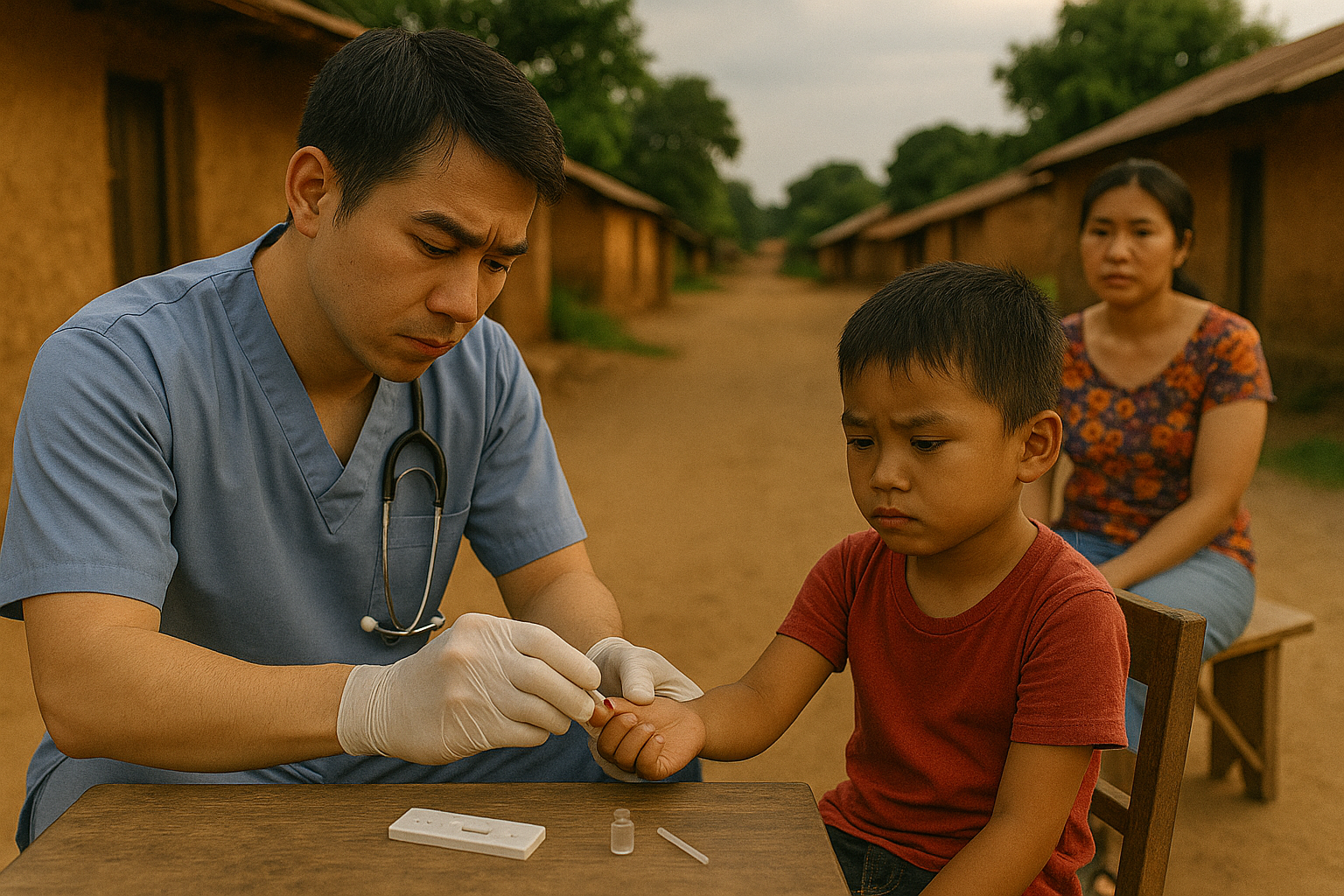Malaria-Free but Not Safe: WHO Outlines Urgent Steps to Prevent Disease Resurgence
The WHO’s 2025 guidance outlines strategies for preventing malaria resurgence in countries that have achieved elimination, emphasizing surveillance, risk assessment, and sustained public health capacity. It warns that without vigilance, imported cases and ecological shifts could quickly reverse decades of progress.

In a bold and comprehensive move, the World Health Organization’s 2025 global guidance on the Prevention of Re-establishment of Malaria Transmission outlines a detailed strategic, epidemiological, and policy roadmap for countries that have achieved malaria elimination. Developed in collaboration with globally respected institutions such as the London School of Hygiene and Tropical Medicine, the University of California, San Francisco, the Chinese Center for Disease Control and Prevention, and the Carter Center, the guidance emphasizes that elimination is not a final destination but a fragile milestone. With over 40 countries certified as malaria-free, the continued threat of imported cases, via travel, migration, and even mosquitoes, presents a real risk of renewed local transmission. This global guidance serves to bolster preparedness, improve health system resilience, and safeguard decades of progress.
Understanding Receptivity and the Risk of Parasite Importation
Central to WHO’s strategy is the concept of malariogenic potential, the combined measure of receptivity and importation risk. Receptivity refers to how suitable an ecosystem is for malaria transmission, often determined by the presence and bionomics of Anopheles mosquito species. Even after elimination, vectors frequently remain, ready to transmit Plasmodium parasites if reintroduced. Compatibility between parasites and local vectors matters: for example, An. atroparvus in Europe is consistently non-infective to African P. falciparum strains, offering natural protection in some regions. However, global travel and climate change can disrupt these balances, leading to unexpected risk.
Importation risk, on the other hand, is driven by the movement of infected individuals or, more rarely, mosquitoes. Populations such as migrants, refugees, mobile laborers, and travelers returning from endemic areas are primary contributors to this risk. Countries are advised to conduct continuous, localized assessments using data on the environment, vector presence, climate patterns, and social mobility. These insights should guide decisions on where to implement targeted surveillance and intervention strategies.
Lessons from Setbacks: When Elimination Was Not Enough
History offers sobering lessons. Several countries once malaria-free experienced alarming comebacks. In Armenia, transmission re-emerged in the 1990s following the collapse of the public health infrastructure. Greece, which had seen no local cases since the 1970s, experienced a resurgence among migrant farm workers in poor housing conditions. In Yongcheng, China, climate change and a reduction in livestock changed mosquito feeding patterns, leading to a significant outbreak. In many of these cases, the most common failure was delayed diagnosis, especially when malaria was no longer considered a likely cause of fever by clinicians.
Such cases underline the importance of retaining clinical vigilance in malaria-free regions. WHO strongly recommends regular refresher training for healthcare workers, integrating malaria awareness into primary care, and leveraging partnerships with private providers and local communities. Without continuous awareness and readiness, even a single undetected case can escalate into local transmission.
Surveillance, Diagnosis, and Rapid Response: The Frontline Defenses
A major pillar of the guidance is maintaining a high-performing surveillance system. This includes both disease and entomological surveillance. Disease surveillance should employ both passive and active case detection. For example, Paraguay activates broad testing when an imported case appears in a receptive area, while Sri Lanka uses medical associations to promote malaria testing among travelers. In high-risk zones, community health workers (CHWs) can play a crucial role in screening migrant populations.
Entomological surveillance is equally vital. Countries are urged to monitor mosquito species composition, breeding patterns, and insecticide resistance. The recent spread of Anopheles stephensi, a South Asian vector now found in several African urban centers, underscores the need for early vector identification. Some countries have implemented laws restricting water usage or rice cultivation near homes to prevent mosquito breeding. Others, like Singapore, enforce stringent vector control legislation with penalties. These efforts must be supported by capacity in national reference laboratories, trained microscopists, and ready stocks of diagnostics and treatments like parenteral artesunate.
Sustainable Systems, Strong Leadership, and Cross-Border Solidarity
The prevention of malaria re-establishment ultimately depends on governance, leadership, and financing. WHO calls for integrating malaria prevention into primary health care (PHC) systems and essential public health functions (EPHFs). Countries like Algeria fund vector control through municipalities, while Suriname has transitioned its COVID-19 public–private partnership fund to support malaria prevention. Success also requires multisectoral collaboration. In Uzbekistan, water resource authorities routinely eliminate breeding sites, while Tajikistan mandates a three-year follow-up for citizens returning from endemic zones.
A robust national strategy also needs to include outbreak preparedness. Countries should define thresholds for triggering emergency responses and maintain emergency stockpiles. WHO recommends integrating malaria preparedness into broader health security frameworks. Moreover, cross-border collaboration is essential. Shared malaria ecosystems, such as border villages between Bhutan and India, require synchronized vector control and information-sharing. Informal collaboration between border health officials, supported by international organizations when needed, can be vital during sudden outbreaks.
Ultimately, the WHO’s guidance does more than offer a technical manual, it serves as a warning and a call to action. In an interconnected world, where pathogens and people cross borders with ease, elimination alone is not victory. It is the beginning of a new, ongoing responsibility. Preventing re-establishment is not just about protecting national health status, it’s about upholding a global commitment to end malaria once and for all.
- FIRST PUBLISHED IN:
- Devdiscourse
ALSO READ
WHO Honors Global Leaders for Driving Historic Pandemic Agreement
WHO Applauds India’s AI-Driven Ayush Model, Issues Global Roadmap on Traditional Medicine Tech
India's AI and Ayush Systems Collaboration Lauded by WHO
Tragic Mystery: The Disowned Actress Who Was Left to Silence
Deflation Hits Wholesale Prices: Food and Fuel Costs Drop in June










